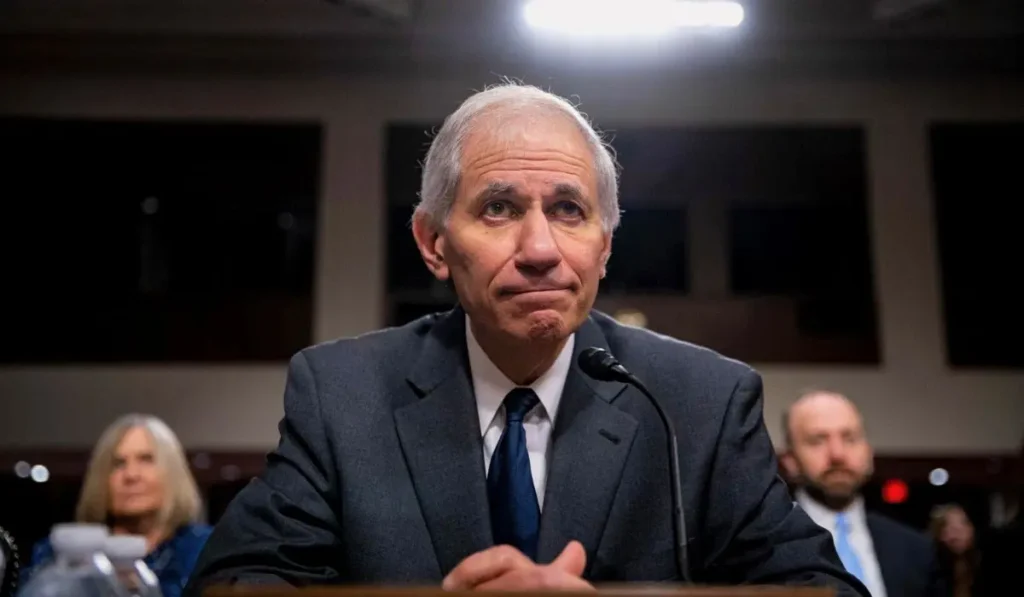The Federal Deposit Insurance Corporation (FDIC), a U.S. government-run corporation that supplies deposit insurance to depositors in American commercial and savings banks, has proposed new rule changes that will require regional banks with at least $100 billion in assets to issue long-term debt that will be enough to absorb losses in case the lender suffers a collapse.
The proposal issued by the FDIC, the Federal Reserve, and the U.S. Treasury’s Office of the Comptroller of the Currency (OCC), is designed to strengthen the banking sector’s resilience following the astronomical failures of three U.S. banks earlier this year, which became the largest banking collapse since the 2008 financial crisis.
Regional U.S. Banks With $100 Billion in AUM Must Issue More Debt to Ensure Survival During a Failure
According to a joint notice from the regulators, the new requirements will subject American lenders with $100 billion in assets to debt requirements that are more in line with Wall Street mega banks.
Regional banks falling under the revised category will have to hold roughly $70 billion in long-term debt to be able to survive the event of a government seizure after a default.

During March’s collapse, the FDIC promised to cover all the uninsured depositors at Silicon Valley Bank, First Republic Bank, and Signature Bank because of the sizeable threat the lenders’ failures posed to the global financial system.
The corporation’s Deposit Insurance Fund had to spend upwards of an estimated $30 billion to patch up the liquidity hole, the cost of which will be borne by the country’s biggest banks in the form of special assessments paid to the FDIC.
A fact sheet released by the FDIC detailed that the proposed rules will force banks to maintain long-term debt levels equivalent to 3.5% of their average total assets or 6% of their risk-weighted assets, depending on whichever figure is higher. The regulator also noted that from now onwards, banks will be discouraged from holding the debt of other lenders to reduce contagion risk.
Regulators Want All Banks to Follow a Standardized Risk Model to Prevent Collapses
Earlier last month, the agencies released another set of proposed rule changes that required 30 banks in the United States with at least $100 billion in assets under management, which includes megabanks such as JPMorgan Chase, and Bank of America and regional banks like Fifth Third Bank and Region Bank, to increase their capital requirements by an aggregate of 16%.
The idea behind the reform was to implement a standardized risk model across the industry that would make it easier for lenders to protect themselves in the event of a banking failure.
FDIC Chairman Martin Gruenberg argued that the regional banking crisis that flared up in the spring showed that smaller banks need to adhere to stricter rules that require them to issue more long-term debt to provide an added cushion for losses, reassure depositors, and encourage investors to closely watch how they operate.
Proposed Rules Will Diminish Bank Profits and Increase Funding Costs in a High-Interest Environment
The agencies also acknowledged that the requirements will create “moderately higher funding costs” for regional banks and bring down the key measure of bank profitability by three basis points.
This piles added pressure on the already struggling U.S. banking sector, which had credit ratings for some of its lenders downgraded this year. The banks will also be forced to issue more debt during a time when the interest rate on the U.S. dollar is at its highest-ever level.
Once the proposal is finalized by the regulators, lenders will have three years to conform to the new standard before it is enacted as law.
While giving a speech at the Brookings Institution in August, Gruenberg said the new standard would reconsider three key aspects of banking. Firstly, regional banks with assets of at least $100 billion will be placed in the same bracket as global systemically important banks (GSIBs).
Secondly, the new rule will get rid of a loophole that allows midsized banks to avoid reporting the decline in their bond holdings, lastly, from here onwards, banks will be forced to come up with more robust plans that will need to be implemented during the event of a collapse.
Regulators are also working on upgrading their own policy guidance on risk monitoring, such as limiting the levels of uninsured bank deposits and changing the price of deposit insurance so that lenders won’t indulge in risky practices. All three banking collapses this year were attributed to them having relatively large amounts of uninsured deposits.
The whole point of raising the debt levels is so that when regulators need to seize a bank, the lenders will already have a layer of capital that is ready to absorb losses before the assets of uninsured depositors are threatened, reducing the cost to the FDIC’s Deposit Insurance Fund.
In a research note published on Monday, Mana Gosalia, the chief analyst at Morgan Stanley wrote that the move will force some banks to either issue more corporate bonds or replace existing sources of funding with more expensive forms of long-term debt.
She also warned that the move would further decline profit margins for midsized lenders, which are already under immense pressure due to rising funding costs. Gosalia expects the annual earnings of regional banks to take a hit of as much as 3.5%.
Read More: ‘X’ Obtains License To Enable Crypto Payments For U.S. Users
Latest Policy Changes Were Criticized By Market Experts
Bank Policy Institute CEO Greg Baer warned that federal agencies need to consider the “complete picture” of the proposal by accounting for its costs and benefits or else risk damaging the very institutions that they seek to strengthen.
Regulators also proposed changes to the “Living Plan”, a policy that explains how a bank should wound down in the event of a failure. The amendment would require banks to submit a more detailed report on how their operations can continue if the FDIC were to take over or if the institution needs to be sold off to larger lenders.
The revised Living Plan will also ensure that lenders hand over key data to regulators and prospective buyers so that the takeover process will be streamlined.
While First Republic Bank was sold off to JP Morgan Chase, the FDIC struggled to find a suitable immediate buyer for Silicon Valley and Signature Banks due to lenders’ struggling to provide comprehensive data to potential acquirers.
Since the FDIC announcement was made, the KBW Regional Banking Index, which has suffered deep losses this year, rose less than 1% overall.
Read More: Tornado Cash Founders Charged With Laundering $1 Billion In Stolen Crypto
